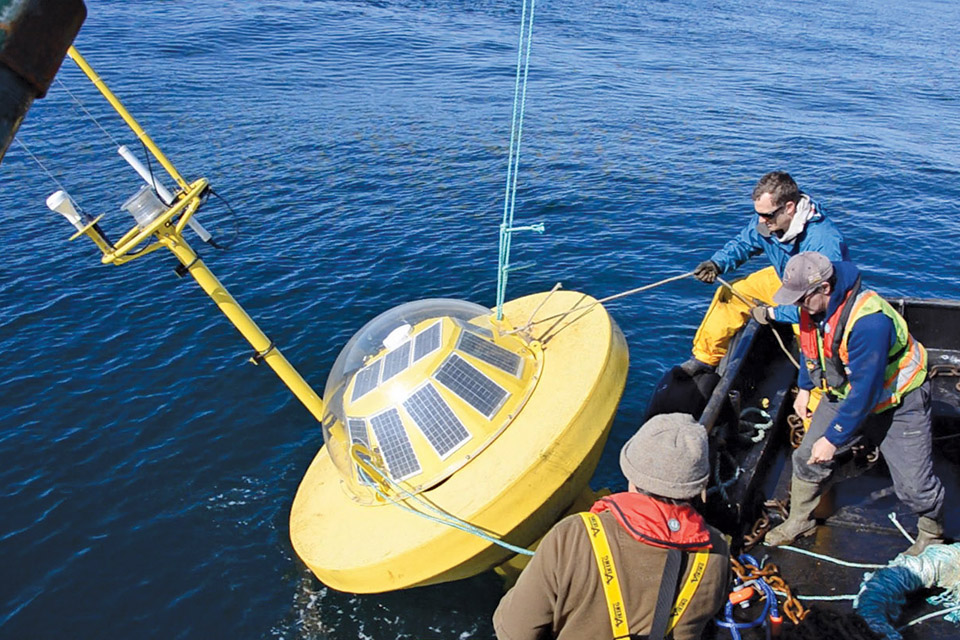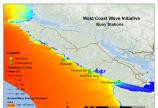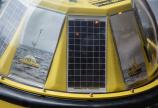Funding supports wave energy research
- Suzanne Ahearne

On Oct. 6, the BC Government announced funding to UVic's West Coast Wave Initiative (WCWI) to support research into the potential of ocean waves to generate clean, renewable and affordable electricity.
The Ministry of Energy and Mines is providing $150,000 from the Innovative Clean Energy (ICE) fund to purchase a new wave energy measurement buoy (the fifth entry in the fleet)—making it one of the largest buoy fleets used for wave energy resource assessment in the world. The Minister of Technology, Innovation and Citizens’ Services, Amrik Virk, made the announcement at UVic.
Since its inception in 2009, WCWI has grown to become the centre of Canadian wave energy research and development. The WCWI—hosted by the Institute for Integrated Energy Systems (IESVic) at the University of Victoria—is a multi-disciplinary partnership of researchers, government and industry members investigating the feasibility of wave energy conversion in British Columbia.
WCWI works with a number of private sector and government partners that build and market energy conversion technologies and WCWI works on integrating those technologies into small communities. They work with BC Hydro and the Pacific Institute for Climate Solutions as well as government agencies responsible for powering remote communities.
There's no question that the wave energy is a viable source of renewable energy. With wave heights of five to seven meters, WCWI is trying to chart the directions the waves come from, the frequencies of those waves, and how often certain conditions occur. The goal is to create a database that people can use to make wave energy converters.
“Here in BC we have a world-class resource,” says WCWI director Brad Buckham. “There’s a global market for this type of technology. It’s not about just supplying domestically; it's about servicing coastal communities that are consuming diesel to get their electricity.”
The impact of the project in the near term is focused on remote communities along BC’s coast. If there were an acute need, they could be converting energy within one or two years, he says.
Terry Tarle is the president and CEO of AXYS Technologies of Sidney, BC, one of the project’s key partners since the project’s inception. AXYS built all five buoys currently deployed by the WCWI off the coast of Vancouver Island, including the Watchmate buoy Buckham dubbed “Beverley” after his mother.
“AXYS participation in the West Coast Wave Initiative has had a huge benefit to our company. We've now got a brand-new product we can offer over 50 countries in the world,” says Tarle.
Buckham notes that one of the obstacles is creating energy that’s as commercially competitive as established sources of power like BC Hydro. “In order to realize that change our social priorities will have to evolve,” he says.
The project is funded by Natural Resources Canada, NSERC, the UVic-led Pacific Institute for Climate Solutions and the BC Ministry of Energy and Mines.




